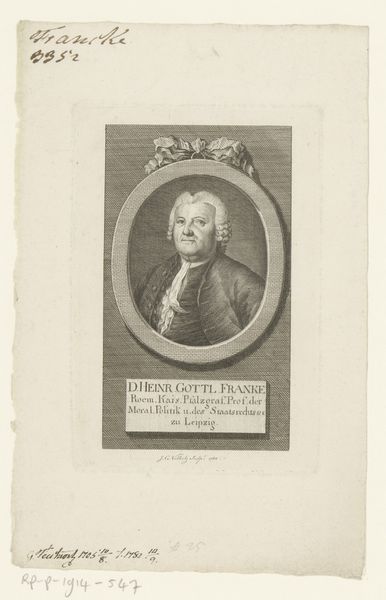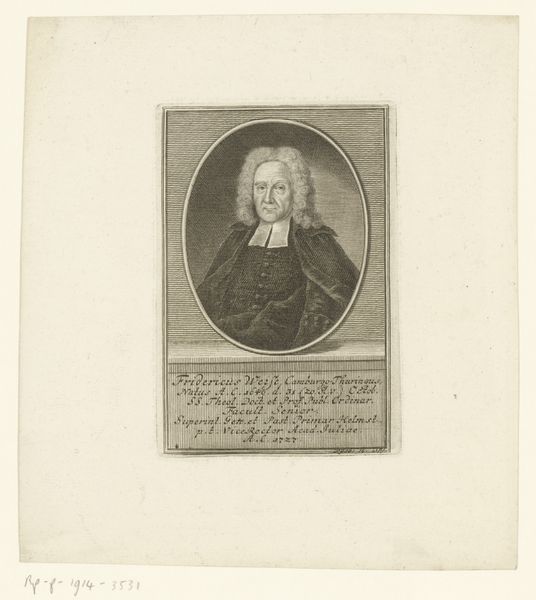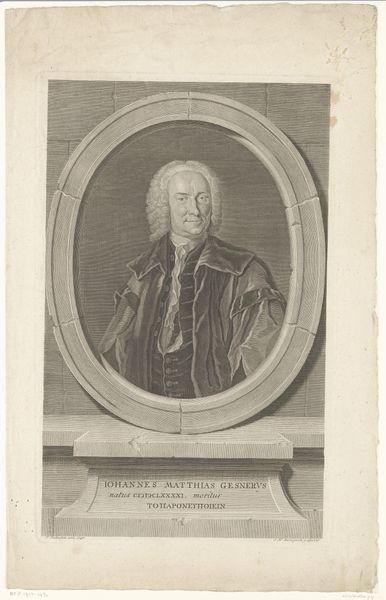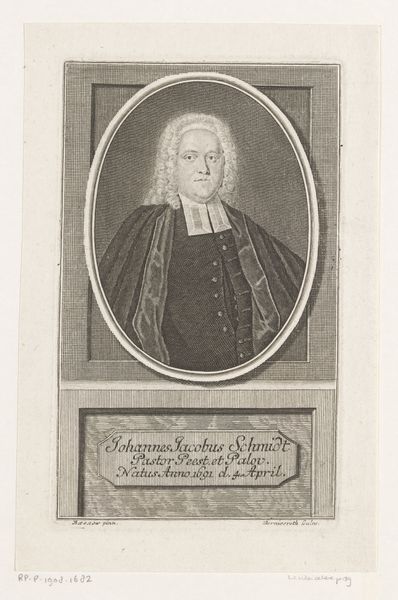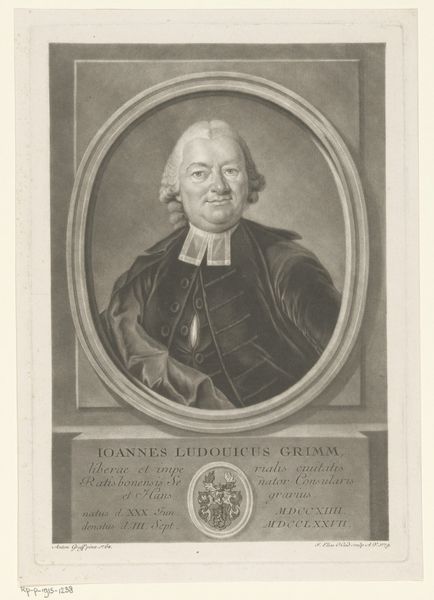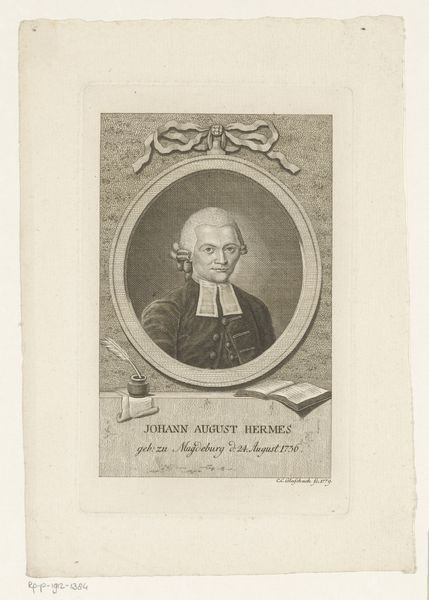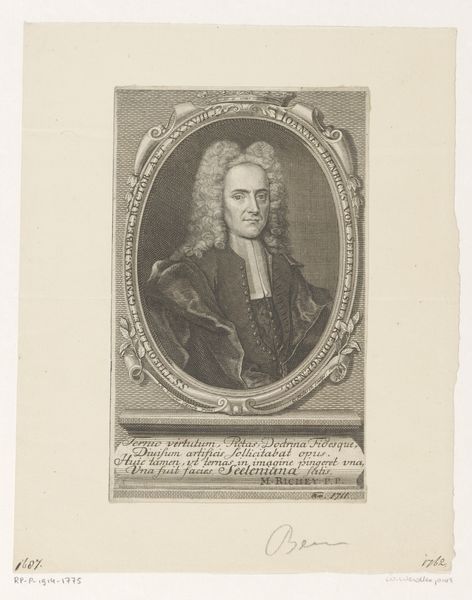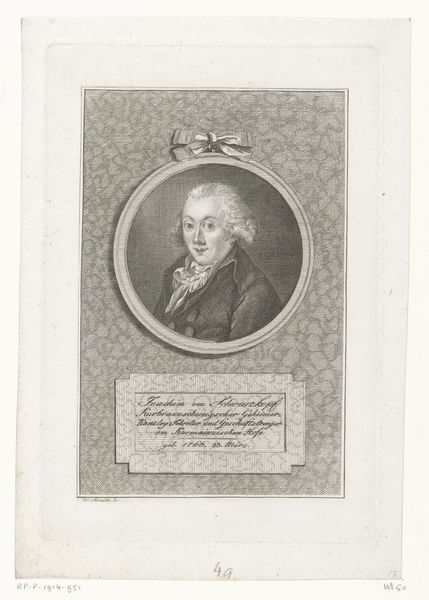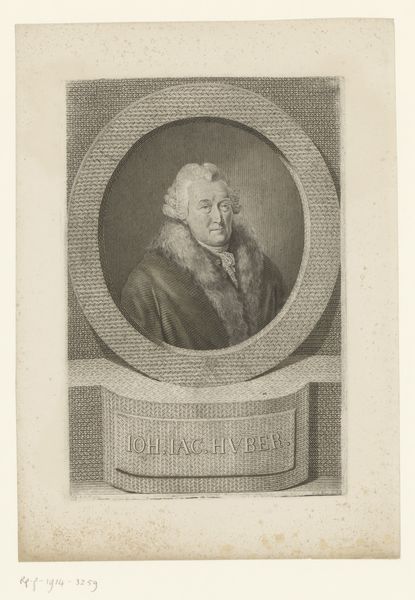
Dimensions: height 198 mm, width 127 mm
Copyright: Rijks Museum: Open Domain
Curator: Oh, it's a rather imposing figure captured in delicate lines. Editor: It feels… reserved, wouldn't you say? Like a carefully constructed facade. Is this Johann Joseph Storchlin's "Portret van Immanuel Hoffmann?" It's etched onto paper sometime between 1772 and 1778, right? The subject appears formal in his dark coat and clerical collar, framed in this oval vignette. I’m curious about the labor involved in achieving this level of detail with such austere means. Curator: It is indeed. And that reserve, I find so much depth hiding beneath the surface. Consider the era – the late Baroque, all poised drama and intellectual heft. He looks like a man steeped in thought, the kind you’d find pacing the hallowed halls of academia. What was it like for the engraver who created this piece? Editor: I wonder about Storchlin himself—how many of these portraits was he churning out for his patron? It's hard not to think of all those hands involved in papermaking too, pulping rags, pressing sheets... The social implications are profound; images became reproducible en masse, forming and solidifying the subject's presence in collective cultural memory. Curator: Precisely! This isn’t just an image, it’s a carefully curated representation. The line work alone speaks of incredible skill, each stroke building shadow and depth. Notice how the starkness accentuates his strong features and those judging eyes! It speaks volumes. I picture him carefully calibrating the engraving for reproduction, anticipating how these multiplied images would become an instrument for disseminating particular ideas of status. Editor: The very choice of engraving points to dissemination—multiple impressions creating accessibility, shaping how Mr. Hoffmann would be received by colleagues, followers. Yet I’m drawn to what the surface reveals about the process: the deliberate, perhaps tedious act of engraving—a constant back and forth between what is included and what is eliminated. There is such pressure to be perfect within the means. Curator: Ultimately, this piece speaks to the power of image-making. It makes me ponder on how much his image could communicate, given a network in that time period—each mark and cut resonating for those privileged enough to encounter the portrait. Editor: Absolutely, the consumption and labor behind this Baroque portrait reminds us that no artwork is created within a vacuum. And thinking of these multiple angles changes my perspective about how to value an artwork's role, which is to bring social and historical context to the front.
Comments
No comments
Be the first to comment and join the conversation on the ultimate creative platform.
